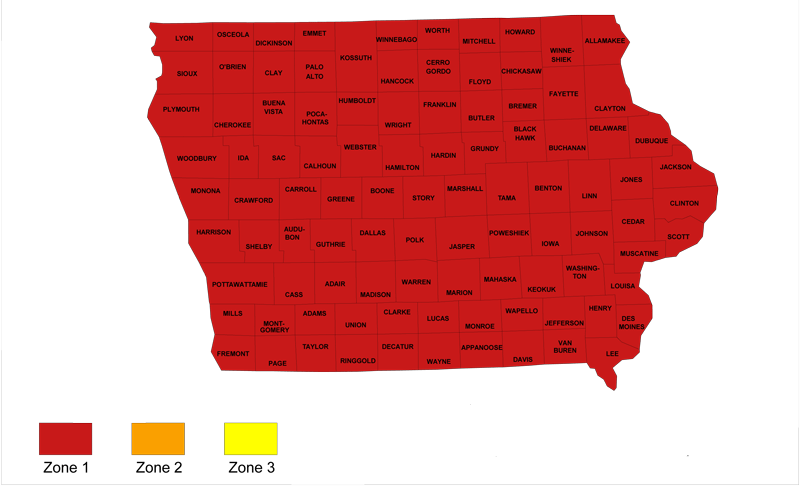

319-213-0228
Call/Text:
RADON INFORMATION
What is Radon?
Radon is a naturally occurring radioactive gas that decays from uranium and radium found in the soil. When radon decays, it releases ionizing radiation which can damage lungs and tissues increasing the risk of lung cancer. The decay products of radon are well established carcinogens (cancer causing). In fact, it is estimated that radon causes approx 21,000 deaths in the United States per year and the IDPH estimates 400 alone are in Iowa. It is a colorless and odorless gas, so there is no way to tell if your home has high radon levels unless you test.
What is Radon? Video by Iowa Department of Public Health

How Radon Enters A Home
Radon gas can enter and accumulate inside your home through cracks and openings in the foundation or through the water supply. It is more common to have elevated radon levels due to entry from the soil beneath the structure. As hot air rises in the home it creates a vacuum like effect and air from the higher pressure soil can easily enter a home.
Health Effects of Radon?
Many studies over many years and all over the world have concluded that radon causes lung cancer. These studies have been reproduced in the lab as well as many live studies on human populations, including a study in Iowa. As radon decays it releases ionizing radiation damaging lung tissue. Smokers or previous smokers are especially at risk. The Environmental Protection Agency estimates that there are 21,000 deaths a year associated to radon. The Iowa Department of Public Health estimates 400 deaths alone in Iowa.

Why is Radon a Problem? Video by Iowa Department of Public Health

How to Reduce Radon Levels
What is Radon Mitigation? Video by Iowa Department of Public Health
A variety of methods can be used to reduce radon levels in homes. In most cases in Iowa, a sub slab depressurization system is installed as well as sealing off radon access points in the foundation. The sub slab depressurization typically consists of a large vent pipe that is installed to create a suction point in the soil underneath the home and vent it to exterior above the roof line. Many times a fan is installed to assist with venting. There may also be other methods that can be used depending on the type of structure and foundation. It is important to consult a licensed mitigation specialist if your radon levels are high enough to warrant mitigation.
IOWA - EPA Map of Radon Zones
The purpose of this map is to assist National, State and local organizations to target their resources and to implement radon-resistant building codes.
This map is not intended to determine if a home in a given zone should be tested for radon.Homes with elevated levels of radon have been found in all three zones.All homes should be tested, regardless of zone designation.

Radon & Iowa
The entire state of Iowa is considered zone 1 and at high risk for radon gas in the home according to the EPA. In fact, according to the Iowa Radon Survey, Iowa may have the largest percentage (71.6%) of homes above the US Environmental Protections Agency action level of 4 pCi/L.
The only way to know if your radon levels are elevated is to test.
EPA RECOMMENDS:
If you are buying or selling a home, have it tested for radon.
Test every 2 years whether or not a mitigation system is installed.
Test if there is change in living conditions such as using the basement more frequently
For a new home, ask if radon-resistant construction features were used and if the home has been tested.
Radon levels less than 4 pCi/L still pose a risk and, in many cases, maybe reduced.